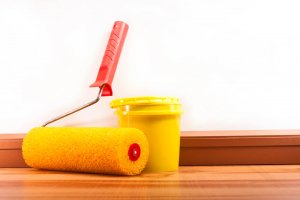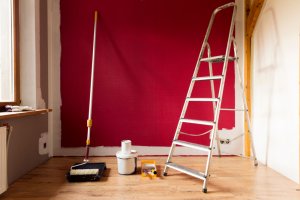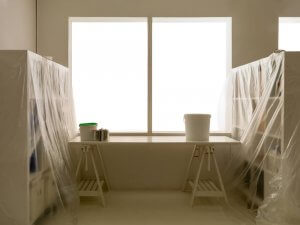Common Mistakes People Make When Painting The Walls

Painting the walls isn’t as easy as it might sound, but because of how expensive it can be to hire a professional, many of us decide to do it ourselves. However, we often find that we don’t get quite the result we hoped for…
If you’ve never painted the walls before and you’re determined to do it yourself, here you’ll find some of the most important aspects to keep in mind to avoid the most common mistakes people make when painting the walls.
1. Painting the walls – gather everything you need

Before you start painting any room, the first thing you need to do is gather together everything you’re going to use. People often think that all they need is a can of paint and a brush, but it isn’t quite as simple as that.
Besides these two items, you’re also going to need several other tools and materials. A roller, sheets or tarpaulin to protect the floor and furniture, a paint scraper to remove any splashes of paint and masking tape are all essential.
2. Check the condition of your walls

While this might seem a little pointless given that you’re about to cover them in paint, this is a really important step to keep in mind. By checking the condition of your walls, you can make sure they’re fully prepped and ready to paint.
In some cases, the walls may be cracked, or covered in dust and stains. All these issues need to be resolved at this stage, either by cleaning them with a mild detergent or making any necessary repairs.
3. Protecting the furniture and floor

It’s important to protect the furniture, floors and other items in the room so that you can avoid any unwanted stains or paint splashes.
Plastic sheeting, drop cloths or old bedsheets you no longer need can be used to cover the entire floor and even the furniture. However, if you have enough space elsewhere, the best thing to do is to move any furniture out of the room completely while you’re painting.
If that’s not an option, you can simply move all the furniture into the center of the room. This leaves the walls free and keeps your furniture as far away from the paint as possible. You can then use your sheets to give the furniture additional protection from paint.
4. Choosing your materials and finding the right time to paint your walls

All the tools and materials you use should be of good quality. By using the best possible equipment, you can ensure a high quality and professional-looking finish. Though it might be tempting to buy lower-quality materials to save a bit of money, the result simply won’t be as good, and you’ll almost certainly end up making more work for yourself.
As well as choosing the right materials, you’ll also need to think about the time of year. More specifically, you need to choose the right day. Try to avoid days where the weather conditions are extreme. It shouldn’t be too hot, too cold, or too wet. Humidity can cause huge problems when it comes to drying the paint and can spoil the overall finish.
As a recommendation, we advise painting your walls on dry, mild days. It’s also best to paint with your windows open to help the paint dry more quickly, and let out that overpowering smell of fresh paint.
5. Painting the walls – one coat at a time

In most cases, a single layer of paint won’t be enough to give your walls that professional-looking finish. You’ll need to apply multiple layers to make sure they look great. However, problems often arise when people start applying the second coat of paint without giving the first coat enough time to dry.
It’s very important to let each coat of paint dry completely before moving on to the next. Otherwise, it’s almost impossible to get the results you’re after. If necessary, you can paint your walls over several days. That way, you can ensure they’re completely dry before you get started on the second coat.